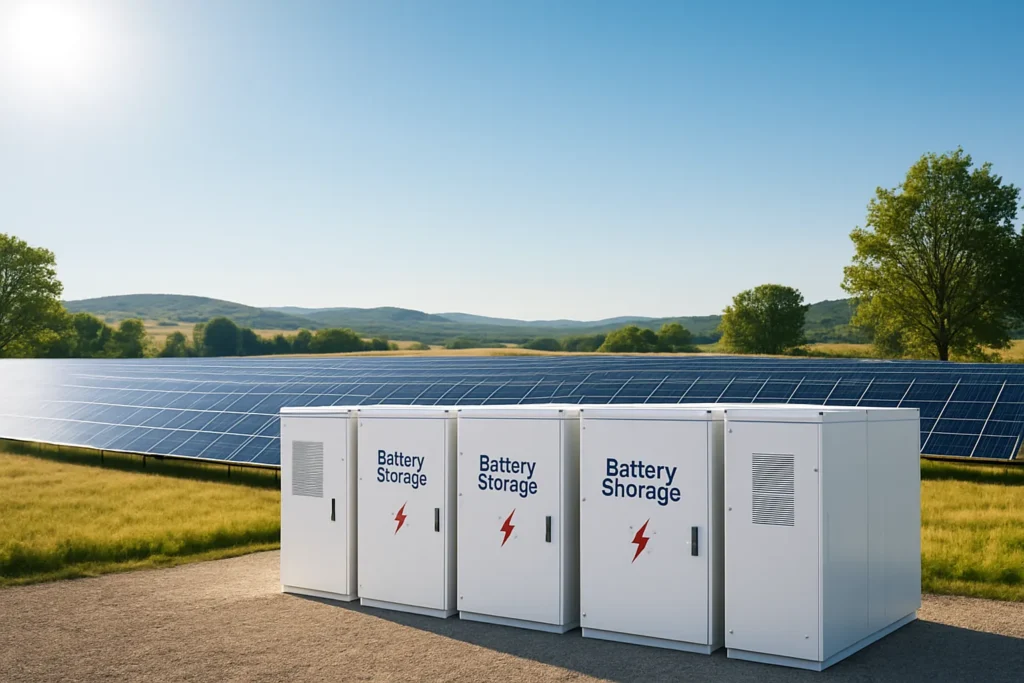A Quiet Revolution in Energy Storage
Imagine walking through a New England neighborhood as sunlight glints off rows of solar panels. Quietly, almost invisibly, massive batteries are helping to anchor the stability of the electricity grid. That future is fast becoming a reality in Massachusetts, as JinkoSolar and Distributed Energy Infrastructure (DEI) commission 21.6 megawatt-hours of advanced energy storage—enough to power thousands of homes for hours and smooth out the peaks and valleys of solar generation. The scope of this project may seem technical, but its implications ripple far beyond the state’s borders.
Massachusetts is not just adding another clean energy project—it’s charting a path forward for the entire country. This new deployment leverages both DC and AC coupled configurations—an engineering approach that offers maximum flexibility and integrates seamlessly with a range of grid services and legacy infrastructure. According to Jeff Juger, Deputy General Manager at JinkoSolar U.S., the partnership with DEI “represents the next step in truly resilient and sustainable energy systems, grounded in American engineering expertise.”
State officials and industry experts alike point to the urgency of these developments. With recent Senate proposals threatening to roll back federal incentives for renewables, Massachusetts has doubled down on its Solar Massachusetts Renewable Target (SMART) program, providing the certainty and long-term policy vision the market craves. The state now aims to achieve 5,000 megawatts of energy storage by 2030—a bold goal that will demand both technology and willpower.
The Politics and Pitfalls of Clean Energy Progress
Delving beneath the headlines, it’s clear there’s more at stake than kilowatt-hours or carbon credits. Massachusetts is setting itself up as a bulwark against wavering federal resolve on climate action. The contrast between progressive energy policies at the state level and the obstructionism that typifies conservative energy agendas nationally is stark.
Recent history is instructive here. During the Trump administration, renewable energy faced relentless deregulatory assaults and unfounded skepticism on everything from grid resilience to economic costs. Those talking points have not vanished; if anything, they remain alive and well across right-wing statehouses and in the GOP’s 2024 policy blueprints. Tax credits and incentive programs—the same ones under threat—helped catapult the U.S. solar industry from fringe to force, making projects like this JinkoSolar-DEI installation possible.
Sean Harrington, DEI’s CEO, cites JinkoSolar’s robust U.S.-based service team and more than 15 years of proven results as key reasons for the partnership. “We needed a collaborator that could match our ambition,” Harrington said. “Jinko’s technology and support have been vital in streamlining integration and helping us maximize the performance of every system.”
But what happens if right-leaning lawmakers succeed in pulling the rug from existing supports? Local communities would bear the brunt. According to a recent Pew Research study, roughly two-thirds of Americans now support expanding incentives for clean energy, viewing it as an economic and environmental imperative. Despite this, Republicans in Congress continue to advance proposals that would curtail or eliminate crucial federal programs, framing them as burdensome or unnecessary—ignoring the lived realities of families facing utility rate hikes or disruption from extreme weather.
“State-level solutions like Massachusetts’ SMART program are a direct answer to gridlock and regression in Washington. They set an example of how local leadership can drive innovation, shield progress from national setbacks, and keep the clean energy promise alive for communities on the front line of climate risk.”
Building a Resilient, Just, and Clean Energy Future
A closer look reveals a deeper truth: the story of Massachusetts’ new battery systems is about more than technology—it’s about justice, jobs, and local empowerment. Clean energy projects create employment up and down the supply chain, from engineering to construction to ongoing operations. According to the Massachusetts Clean Energy Center, the sector employs over 100,000 people—a number set to grow as storage and solar solutions proliferate.
Beyond that, energy storage transforms how communities experience the benefits of renewable power. Enhanced grid flexibility means fewer blackouts and lower risk from storms. As wild weather surges, a distributed and resilient grid—anchored by smart storage—is crucial. Harvard energy scholar Leah Stokes notes, “We’re talking about the safety and well-being of families facing record heat or cold. This isn’t an abstract policy debate—it’s a question of real lives.”
Under the hood, DEI brings deep expertise to the table, having delivered over 1.2 gigawatts of solar and 400 megawatt-hours of battery storage projects nationwide. Partnering with JinkoSolar, one of the world’s largest solar technology leaders, signals a commitment to world-class standards and local service—a model for effective public-private synergy.
Yet obstacles remain. Without stable incentives and political will, the pace of progress could quickly stall. Skeptics have warned that sudden policy reversals, like those contemplated in Washington, could jeopardize years of investment and innovation. States like Massachusetts are doing the heavy lifting, proving that with vision, collaboration, and a willingness to adapt, a just transition is possible. The question for the rest of the nation: will we follow, or fall back?

